It’s safe to say the 700 Years of Completer celebration in October was the first birthday party for a 700-something I’ve ever attended. Not so for the event organizer, Dr. José Vouillamoz, who’s an old hand at this kind of thing — yes, the 700 Years of Rèze and Humagne Blanche party in 2013 was his idea.
As co-author of the encyclopedic, Wine Grapes, and a noted grape geneticist, Dr. Vouillamoz is clearly obsessed with obscure varieties. But as he made clear during his presentation, identifying the origin and ancestry of grape varieties is not just about DNA and family trees. It takes a knowledge of history, patterns of human migration, military conquests, and cultural evolution to tell the whole story.
Thankfully, as a Valais native, Dr. Vouillamoz is particularly interested in Swiss varieties, and in his latest book, Cépages Suisses, he dives deeply into all of them. We’re lucky to have him.
Even though Completer is most often associated with its putative birthplace of Malans, its spiritual home may well be Chur — Switzerland’s oldest city. (I tell the story of this mysterious grape and its relationship to the city in an earlier post).
The setting for this one-time event was the venerable Schloss Reichenau, a 17th century castle located at the confluence of the upper and lower Rhine, not far from Chur.
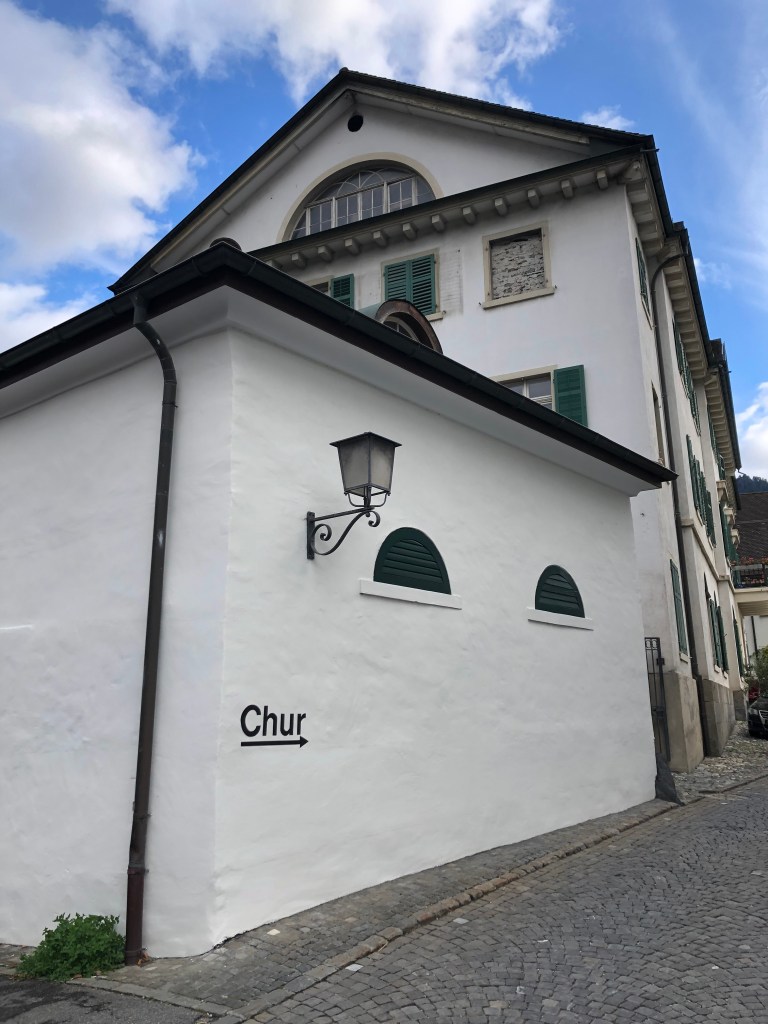
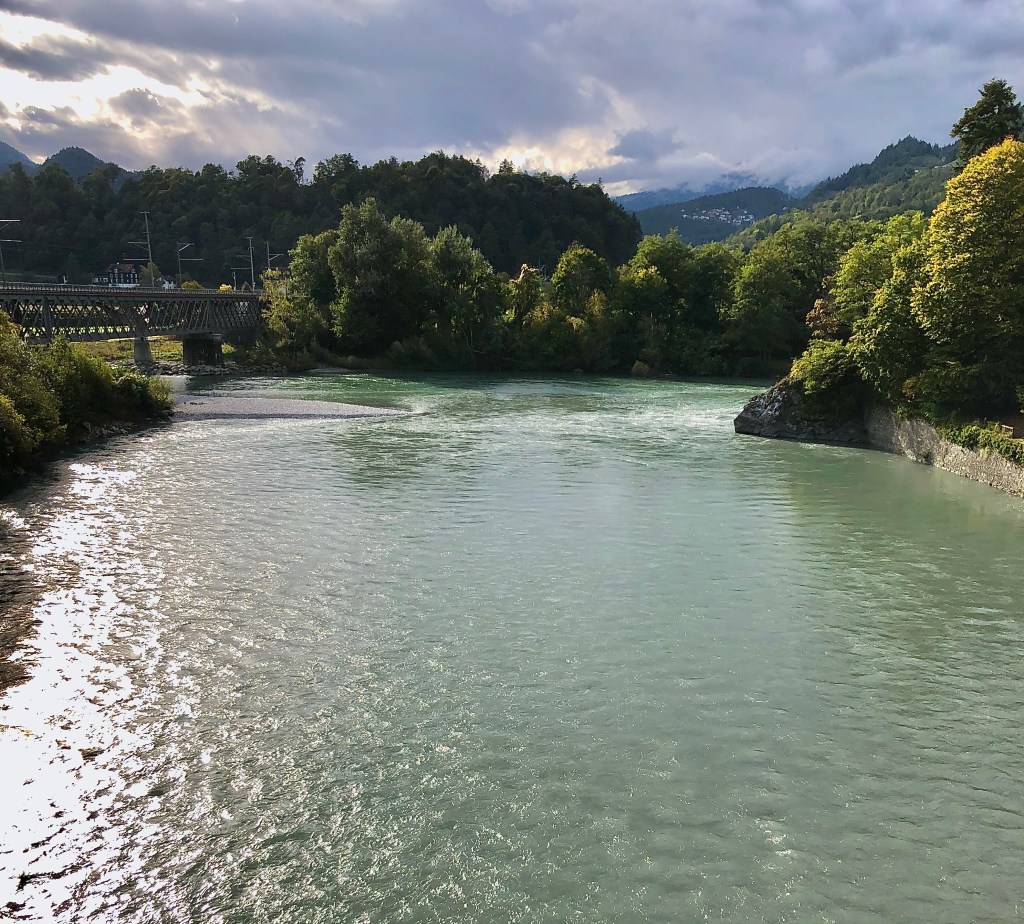
Our hosts for the evening was the von Tscharner clan, one of the city’s oldest families. The family history dates back to the Three Leagues alliance, a precursor state to the canton of Graubünden, when Johann-Baptista von Tscharner helped to steer the alliance through the French Revolutionary wars. Even older family members were influential in the areas of law, scholarship, and politics.
But it was the elder Johann-Baptista’s purchase of Schloss Reichenau in 1793 that first established a family presence there. A legacy the current owner, Gian-Battista von Tscharner, takes very seriously.
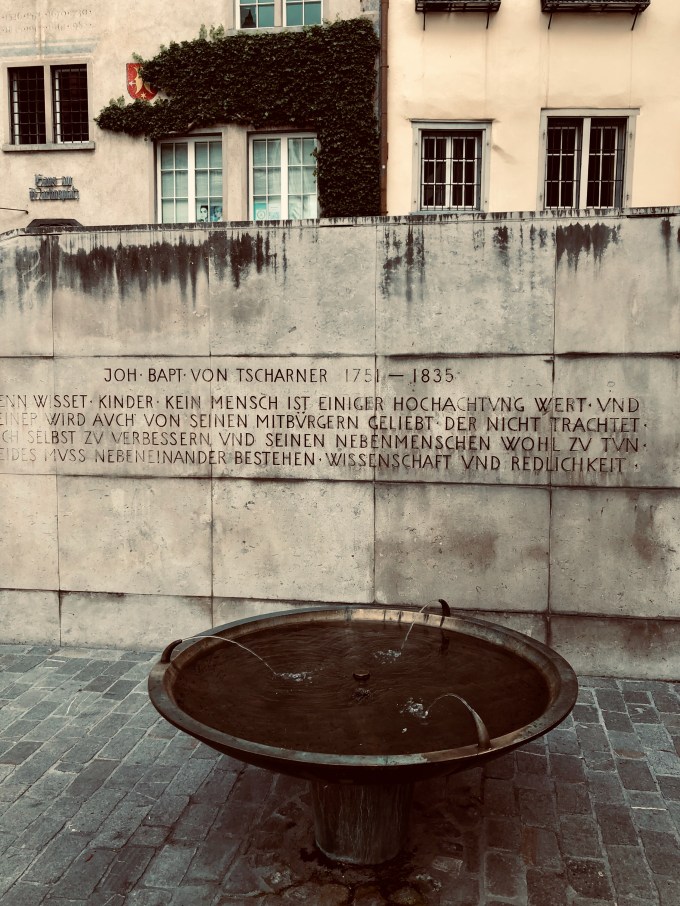
Everything Old Is New Again
700 years is more than enough time for a grape variety to evolve, either through spontaneous mutation or human intervention. We see this quite plainly with ancient varieties like Pinot Noir and Savagnin, both of which display color and/or aromatic mutations in abundance. Unfortunately, because Completer was nearly lost in the middle of the last century, it lacks comparable genetic diversity. We know of several offspring — Lafnetscha, Bondoletta and Hitzkircher — but we know nothing of Completer’s ancestry or origin. And it doesn’t appear that it’s traveled very far, either — it’s considered a Swiss variety only because it exists nowhere else.
Other than a few ungrafted centenarians in Malans, some of the oldest Completer vines are actually found in Fläsch, at Weingut Roman Hermann, and in Jenins, at Sprecher von Bernegg. The rest have been planted recently — in the last 15 years or so — which means most producers have very little experience with the variety, either in the vineyards or in the cellar. Plantahof, the canton’s agricultural school in Landquart, is working hard to expand the amount and quality of genetic material available, but it’s a slow process.
Today, Completer can be found in Valais, Ticino, Zürich, St. Gallen and most recently in Geneva, Vaud and Basel Stadt (see table below). Mono-varietal wines are made in each of the above mentioned cantons save for Geneva, St. Gallen and Basel Stadt, where, for the moment, minute quantities of Completer are blended with other varieties.
Completer in Switzerland: Statistics from Office Fédéral de l’Agriculture
| Canton (in hectares) | 2015 | 2020 |
| Graubünden | 3.7010 | 5.5949 |
| Ticino | 0.6210 | 0.9614 |
| Valais | 0 | 1.1945 |
| Zürich | 0.4191 | 0.4075 |
| Geneva | 0.030 | 0.039 |
| St. Gallen | 0.0810 | 0.1810 |
| Vaud | 0 | 0.0817 |
| Basel Stadt | 0 | 0.0254 |
| Total | 4.8521 | 8.4854 |
The Tasting
It would take more than a casual scroll through Vivino or Wine Searcher to come up with all 25 producers of Completer, so for all of them to be presented at this event was a feat in itself. Frankly, I didn’t expect many of the newcomers to shine this early in their journey, and most didn’t, but I was pleasantly surprised by several I tasted.
It’s no surprise that our Bündner friends claim Completer as their own and that they do it best, but Valais is preparing a strong case that the grape has a bright future there, as well. In my view, this is exactly the type of rivalry the Swiss wine industry needs. Everyone wins when great winemakers are pushed beyond self-imposed limits and notions of entitlement.
But there is more than just regional rivalries to consider — there may be stylistic rivalries forming, as well. In separate conversations I had with two of the best modern practitioners — both young, and, for the moment, nameless — neither professed a love for the old-school, or oxidative style. Yet, the 100 or so attendees rewarded the most famously old-school wine of the evening with the loudest applause. In fact, the 2013 from Giani Boner (pronounced Bonner) was greeted with a standing ovation.
Those conversations made me wonder if wines of contemplation are getting a fair shot with the younger Swiss audience. This is ironic, since “oxysecs” (unfortified, dry, oxidative wines) are currently enjoying a renaissance in Jura, Catalonia, and the Languedoc, with young, natural wine enthusiasts leading the charge.
Of course, everything is cyclical and the Swiss can be late to trends, but with only two practitioners of the old-style remaining, one has to wonder about the future. On the bright side, the youthful Johann-Baptista von Tscharner is committed to the style, and Giani Boner isn’t going anywhere soon.
This tasting did confirm that most new producers are opting for a modern or fresh style of Completer. Whether intentional, or not, a few of these wines also had pleasing oxidative notes. So there may exist a middle ground.
Caveat emptor: as more new producers tinker with the grape, there is a risk that this difficult variety may prove too much to handle, and that watered-down or indifferent wines will reach the market — with Completer, you must know the producer.
A few standout wines are described below.
The Valais Contingent
The 2019 Completer from Marie-Thérèse Chappaz sets an early standard for the variety in Valais, but in an almost contrarian way. Against the prevailing wisdom — that Completer needs plenty of sun to ripen — she grafted Completer onto existing vines on the north-facing left bank of the Rhône. Her explanation for this counterintuitive move struck some as risky and foolish:
“I didn’t have any where else to put them.”
The result is undeniable, however. Her first commercially available Completer is a beautifully textured, pleasantly saline version, with a pithy preserved lemon savor, and a nutty, slightly oxidative note. It is already a fantastic and unique expression of the variety. Graubünden beware.
The 2020 from Valentina Andrei is a mini-me version of the Chappaz, with the same saline component, but with bright, green apple aromatics and a mineral core. I have no doubt Valentina will excel with this grape, as she does with everything else she touches.
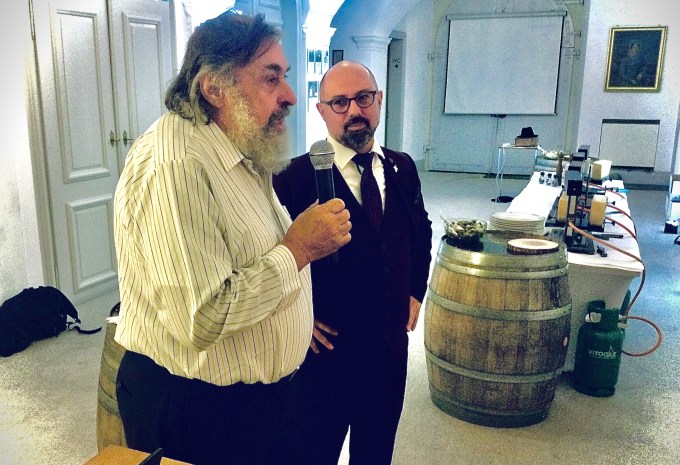
I’ve written about the 2016 Clos de Tsampéhro Completer before. This 2014 version is even more luxurious with a peach and guava fruitiness, some alcoholic heat, and a satiny texture. If you think Viognier, you won’t be far off.
Two other Valaisans show promise. The 2017 Domaine des Dussex (La Cave du Chatillon) channels the Bündner modernists with an emphasis on freshness, oak, and pastry cream sweetness, while the 2020 Ferdinand Bétrisey (Cave Arte Vinum) is dry, rich, and textured, with a homeopathic dose of oxidative nuttiness.
I would be happy to drink either one.
The Graubünden Contingent
With the Bündner wines there is stylistic diversity and a kind of strutting confidence throughout the range. Modernists like Martin Donatsch and Roman Hermann use Burgundy as a model. In his presentation, Dr. Vouillamoz offered that he could easily mistake the 2019 Donatsch Completer for a Grand Cru Chablis, which echoes Martin’s own assessment of the grape. He finds Completer to be both opulent, like Grand Cru Burgundy, and incisive, like Mosel Riesling. I can see that.
The 2019 Hermann is a slightly more relaxed, less austere version of the above. In fact, a comparison of the two might demonstrate the difference between Malans (cool clay soils) and Fläsch (warm limestone soils). Otherwise, its time in Hungarian oak gives it a slightly green, raw wood element that needs time to integrate. Beneath all of that is fresh cream, burning embers, and a long, persistent finish.
Following closely on their heels is Raphael Hug, now in charge at Weingut Wegelin. He has nailed this variety very early in his career. His 2016 Completer is beautifully expressive with creamy oak, mint, fresh mushrooms, and minerals to finish. This is supremely elegant and very promising. Wegelin has recently planted Completer in the famed Spiger vineyard, just west of the village of Malans, so a first of its kind, single-vineyard expression may be on its way.
Of all the wines presented, the rare Thomas Studach Completer was the most difficult to source. It turns out Thomas was unwilling to part with anything, even for an event of this magnitude. So his wonderful 2010 came from Dr. Vouillamoz’ personal cellar. Believe me, it didn’t disappoint. With 11 years of age it is beginning to show a lovely nose of toffee, butterscotch and brioche, all layered into a most luxuriously creamy frame. Studach is known for using small Swiss oak casks for his Completer, which are not quite as refined as French barriques, but do add a layer of exotic green spice to the mix. Give this one another 10 years to really show the potential of this variety.
I was also very impressed with the 2019 Sprecher von Bernegg Completer from Jan Luzi in Jenins. This one had a bit of phenolic grip from some skin contact. It was rich and textured with some oxidative nuttiness. Really quite delicious.
Then there were the old masters of the “oxysec” style. First, a compelling 2013 from Giani Boner which I wrote about previously:
Old gold with some green-orange highlights. Magnificent dried fruit nose with some singed citrus oil and mildly rancid nuts. Notes of polished mahogany and old furniture give depth. Expansive on the palate with warm, slightly spirit-y weight. Dried fruit flavors with a burnished sweetness. Finishes dry, long and warm. This warms my soul.
It was exactly that, again.
Last up was a savory, salty 2008 Jeninser Completer from our host, Gian-Battista von Tscharner. This one is bone-dry and gorgeous, with an appetizing tomato leaf and iodine aroma. This is oxidative without a hint of oxidation, in the way a manzanilla pasada is fresh and vibrant. The comparison breaks down when you consider this Completer is unfortified and it survived without a blanket of flor. It is a perfect example of careful winemaking and scrupulous attention to the art of a long élévage. Bravo.
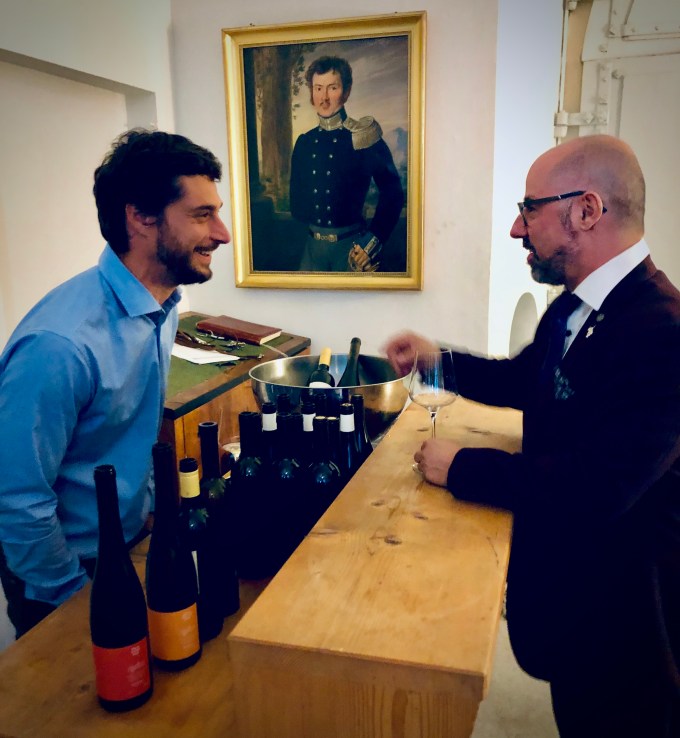
This really brilliant evening ended on a high note. Christian Duc, director of the Vacherin Fribourgeois association, supervised a raclette soirée that had me going back for seconds and thirds. This man really knows his cheese.
Unfortunately, this is likely to be the last celebration of its kind for a while, since the next Swiss grape to turn 700, Plantscher, won’t do so until 2286.
Perhaps, by then, Completer will be a household name.
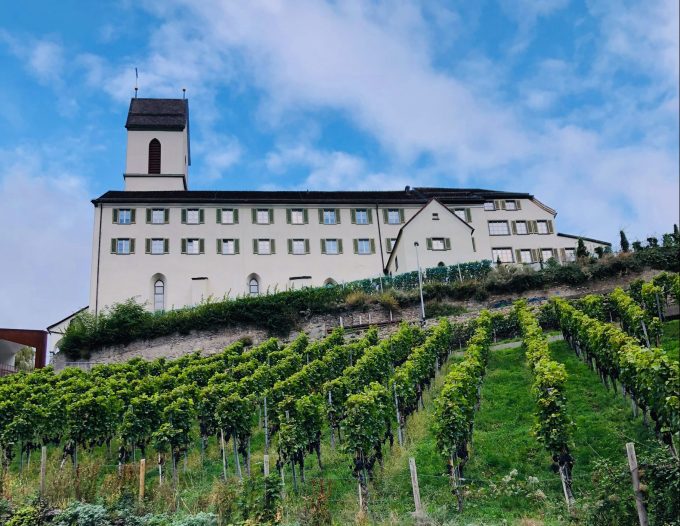
Discover more from artisanswiss
Subscribe to get the latest posts to your email.
Bravo Dennis. Informative and well written as always!
LikeLike
Thanks, Kenn. I’m enjoying pictures of your travels. Retirement is good.
LikeLike
Nice!
Sent from my iPhone
>
LikeLiked by 1 person
Thanks, Ellen. Nice to see you are keeping busy. And your recent photos are gorgeous.
LikeLike